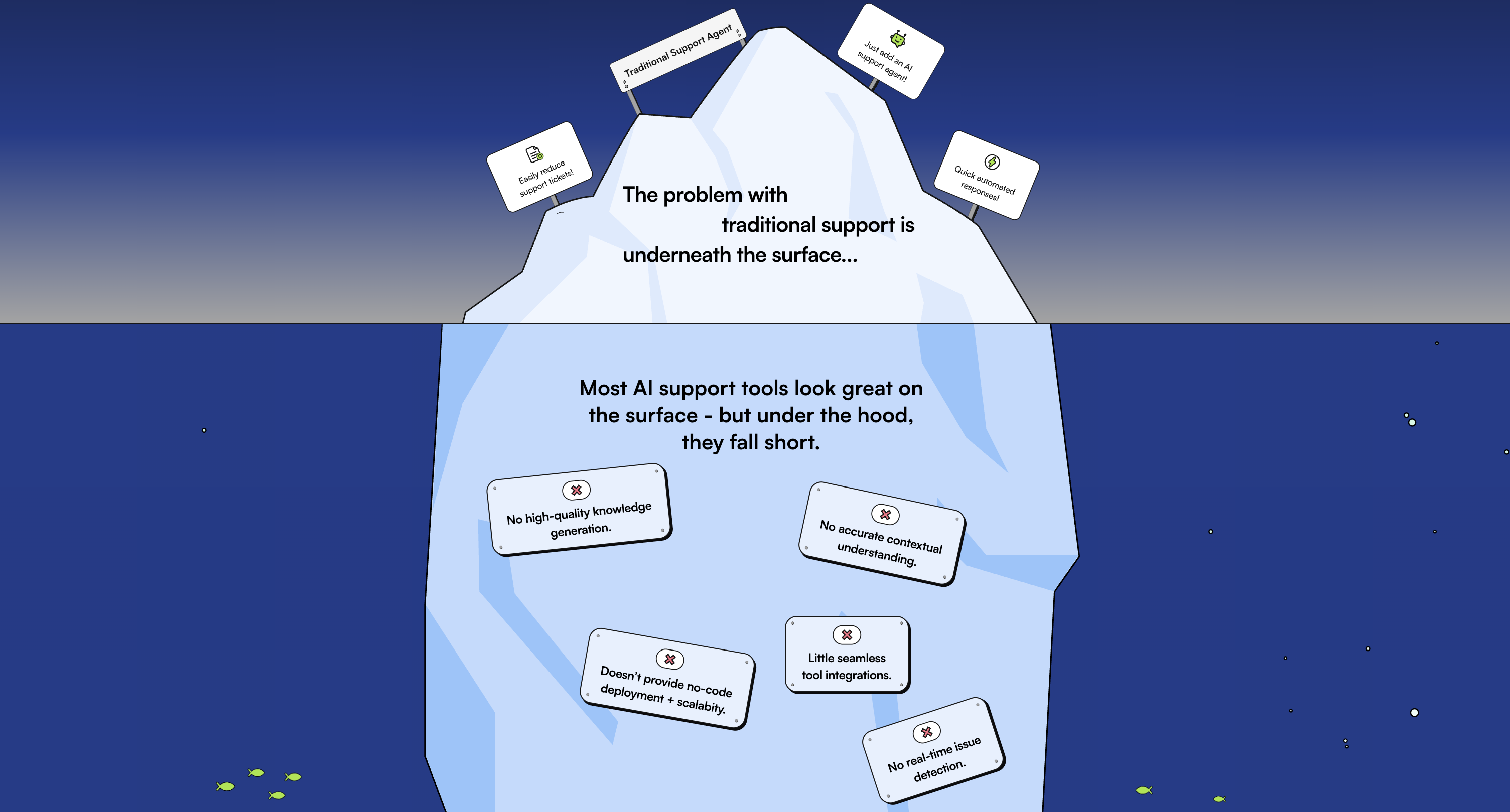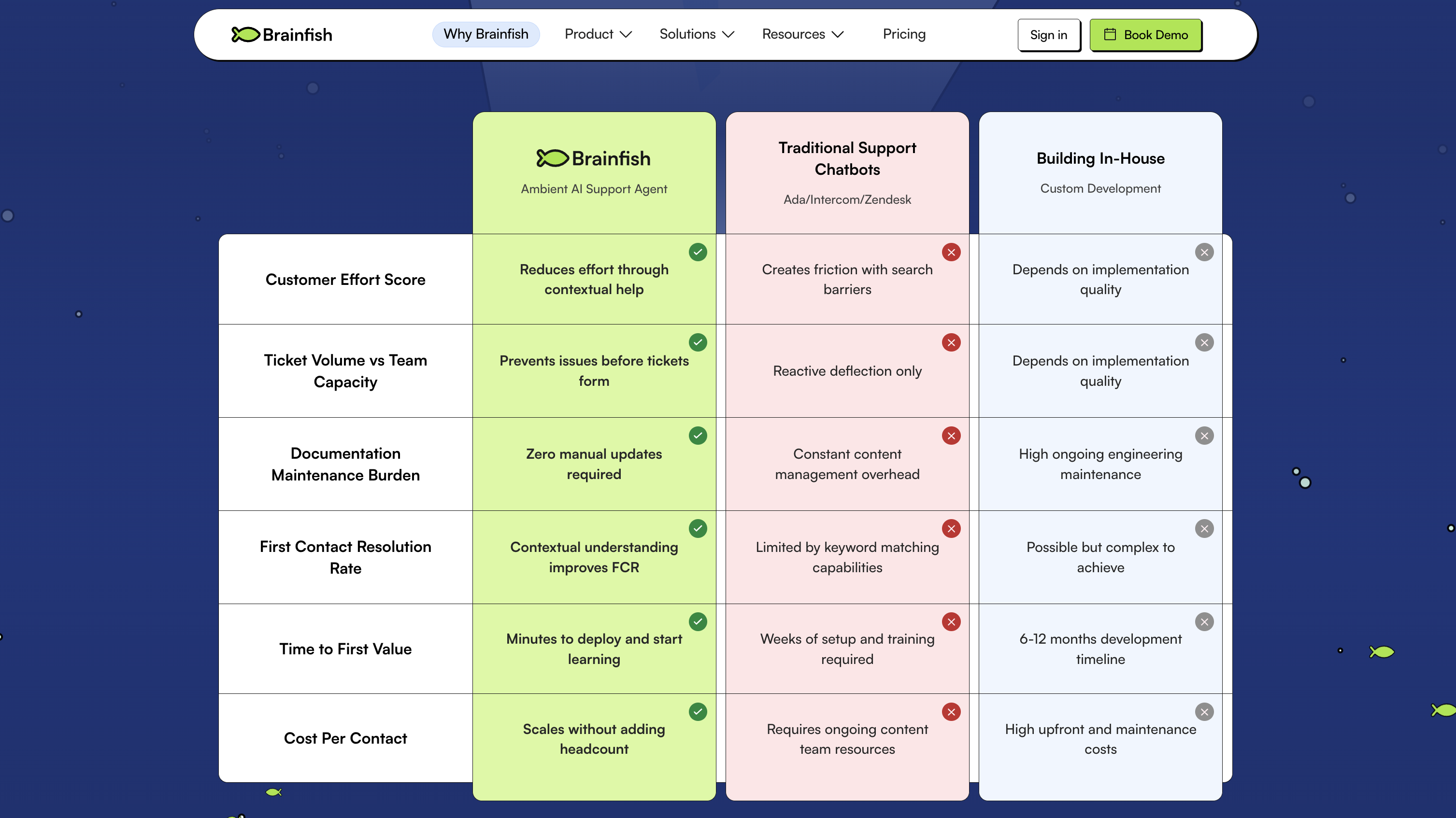
The “Why Brainfish” page flips the standard approach. Instead of leading with advantages, the team spends most of the page exposing what’s broken in alternative solutions. The page includes an iceberg metaphor to make invisible implementation problems visible.
The company is also positioning itself against direct competitors and DIY workarounds simultaneously. This problem-first approach on a “Why Us” page works because it validates buyer skepticism and reframes evaluation criteria to favor Brainfish.
Brainfish is an Australia-based SaaS company co-founded by Daniel Kimber and Ajain Vivek. Founded in 2022, Brainfish builds AI customer support agents that observe user navigation and offer assistance as needed.
I was checking out Brainfish’s homepage when something else caught my attention. It was the “Why Brainfish” link in the navbar. I clicked on it, only to discover a page worth talking about.
Most SaaS companies use their “Why Us” page to list advantages. Brainfish takes a more strategic approach: the team spends most of the page exposing what’s broken in alternative solutions before revealing their own strengths.
The page works because it makes invisible problems visible, then positions Brainfish as the only solution built to handle what others ignore.
The page opens with a large iceberg visual under the headline: “The problem with traditional support is underneath the surface.”

The iceberg metaphor does specific strategic work throughout the page:
The metaphor continues through the comparison tables, where Brainfish consistently reveals what’s underneath competitor approaches. This transforms the page from product comparison into buyer education about what evaluation criteria actually matter.
The comparison table doesn’t just show Brainfish vs. competitors. It also shows Brainfish vs. building in-house.

This three-column structure does strategic work that a simple us- vs. -competitors couldn’t accomplish:
The “Why Brainfish” page reveals what competitors do well at the marketing level. Most tools promise effortless automation, but behind the scenes, they depend on scripts, guesswork, and constant maintenance. They simply move the bottleneck, nothing more.
This positions Brainfish as the company telling you the truth competitors won’t. Instead of just claiming superiority, the company explains the systematic reasons why other tools mislead buyers during evaluation. And that’s a very interesting and powerful messaging frame.
